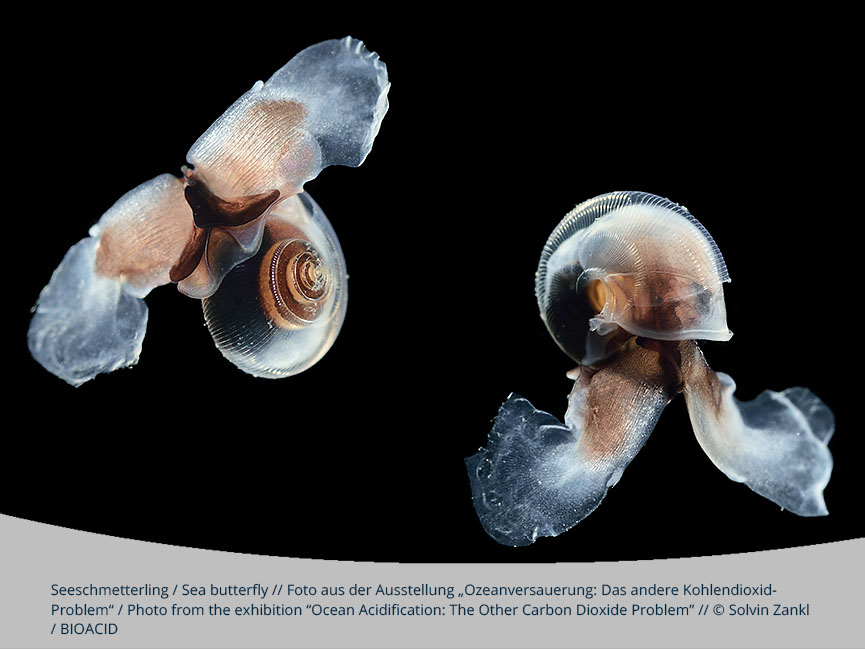The pteropod is one of the most vulnerable plankton species. With its foot developed into two wings, the “sea butterfly” flutters through the ocean. It follows a zigzag course just like its namesake on land. But it cannot rest, display its beauty and drink nectar: Its shell pulls it downwards as soon as it stops flapping. Food is taken up along the way in form of a net that is periodically woven from a viscous fluid and digested together with its content.
This active existence requires a fair amount of energy. And when the ocean’s acidity rises, Limacina helicina and its relatives might be overexerted. Experiments indicate that they will not be able to build their shells under future conditions, since they are made of aragonite, an especially soluble form of calcium carbonate. In upwelling regions where more acidified water occasionally reaches the surface, scientists caught pteropods with deformed, thinner or porous shells. In the Antarctic Ocean, shells were 35 per cent lighter than those of their predecessors dating back to times prior to industrialisation.
Photo: Solvin Zankl
